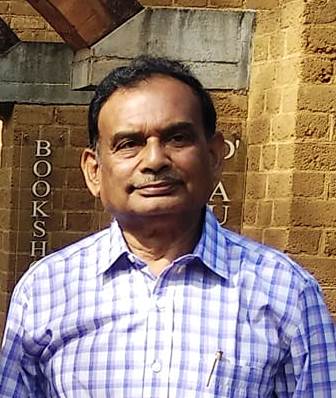Agriculture, though still lacks attention, has been an important cushion in softening the pandemic’s blow to the Indian economy
 Shivaji Sarkar
Shivaji Sarkar

India’s GDP is rising, large corporate are aiding recovery and popular decisions are helping the people have ease of living, but consumer spending and Omicron remains a concern.
The GDP growth 8.4 per cent in the September quarter is higher than Reserve Bank of India’s Monetary Policy Projections of 8.1 per cent though even IT sector seems to lag. An interesting aspect is that agriculture has sustained growth during the most critical pandemic period. It remains neglected despite the farm agitation and be made pivot for growth – a la the maligned Gandhian economy.
Some of the decisions that cheered the masses were bringing down the price of railway platform tickets to Rs 10 from Rs 50, cut in petrol prices, bid to bring down edible oil prices and Uttarakhand repealing the Char Dham Devasthanam Management Act (CDDMA) restoring the 51 temples back to the priests. Populism, politics, and economic courses seem extremely intertwined.
The actions demonstrate that popular concerns and the real informal economy decide the final outcome. For the last two years, Uttarakhand priests and temples were protesting against the CDDMA. It has shifted the popular vote base. The other actions also reflect the mood of the people – the government should interfere less.
Simultaneously, the employment figures show construction and food product manufacturing increase, some say more sustainable but hope it is not a sign of the real-estate driven problems of Asian tigers sometime back. The tigers had gone on similar extravaganza and they found their economy collapsed in a short while. The apprehensions are not imaginary. The fast-paced road constructions have pushed NHAI to a whopping debt of Rs 3.38 lakh crore debt up from Rs 1.22 lakh crore in March 2018 and Rs 2.49 lakh crore a year back.
The PMO has called upon the Union Finance Ministry to work out a rescue plan. Such high debt impacts banks. The sustainability of the spree of constructing roads comes into question. Even private companies like the JP’s Agra Expressway are in difficult times.
Road construction all across the country projecting a country on the fast-development path may become a questionable financial decision. It reveals that of late most private companies collecting toll are in losses. This apart, tolls are increasing costs and prices. In short, it is becoming inflationary. Some States have started building roads parallel to the toll roads. It has drawn the ire of the NHAI. Whatever, possibly it is not an ideal situation that restricts the free flow of movement.
The roads are being built to serve the increasing population pressure. But the latest trends suggest that the projections made may require fast review. Expensive roads are impacting travel, transportation, and freight costs making life dearer. Its sustainability depends on the rising existing population growth. This has now become doubtful in the light of the falling fertility rate to below the replacement level and the recent NITI Ayog study on high poverty across the country. This indicates that the nation has to shift its stress from fast to sustainable development.
The falling fertility rate needs to be discussed more seriously and should call for a full review. But Professor K Srinath Reddy, President of the Public Health Foundation of India, says significant importance must be given to nutrition as the NFHS survey revealed that 67 per cent of children under five and 59 per cent of girls in the age group of 15 to 19 were anaemic. Experts agree that India’s demographic dividend will last for another two decades, and possibly for a third. But we should aim to cash in on it sooner rather than later. And in that context, time is fast running out for India.
So India is at crossroads. It is a peculiar mix of changing politics driven economics. The free food dole for 80 crore people that was decided to be scrapped from November 30, is extended till March 31 considering India’s nutritional concerns.
So, the question is whether the changing politics and economy have to look for new solutions. The corporate results tell us about the nature of economic recovery. It indicates that the recovery is driven by large firms. Not all companies have had the fortune of a V-Shaped recovery. Companies with revenue of Rs 100 crore have actually seen a fall in their September revenues compared to the same period in 2020 and 2019. The fall in sales of smaller companies that started before the pandemic is yet to come back to normal.
The data reveals that 1295 of the 1369 manufacturing firms in inflation adjusted raw material expenses are showing negative 13 per cent negative growth.
So for all these changes, fiscal policy support would remain indispensable for growth. It means with consumer demand lagging, private companies lack the incentive to invest. Unless that situation is restored the government would have to resort to unsustainable debt leading to high costs, inflation and concomitant problems. Thus, despite understanding the problem of infrastructure development it is in a vortex and now must desist for real recovery.
The Central government’s capital expenditure between April and October stood at Rs 2.53 trillion, which is higher than the 2020-21 – Rs 1.97 trillion. Most of these expenses are in public administration, defense and other services even as the output of employment intensive non-farm sectors such as construction, trade, hotels, transport, communication, and broadcasting lag below pre-pandemic level.
Agriculture, though still lacks attention, has been an important cushion in softening the pandemic’s blow to the Indian economy. It escaped contraction in 2020-21, a phenomenon common to all industries and other activities. Agriculture alone has contributed 4.5 per cent of the total growth. Despite that nominal growth and agricultural activities came down from 11.1 per cent in the June quarter to 7.9 per cent in the September quarter.
Overall agricultural income remains low. This, with the rising fertiliser shortages in various parts of the country, will have the twin effects of the rise in cultivation cost, drop in yield and does not bode well for agriculture.
The country has to go beyond the farm bills. Farming itself needs sustenance for overall growth and reduction of government expenses. It has to change focus from a construction-oriented expensive and questionable development model. If the farm sector is developed all other sectors would also prosper. The better the farm income the better has been India’s development.
Let India change its paradigm and chart out a course for a long-term low-cost expansive development model. Yes, agriculture has to be the pivot for the innate development process.—INFA
Advertisements | 5E For Success

5 Advantages of KRC 5E MDP program, powered by KRC Foundation.
1. Employability training
2. Internship
3. Earn while you learn ( Work Experience Certificate, subject to selection and performance)
4. 100% Cashback on Fees through Global Garner
5. KRC Membership & Placement assistance.
Send your resume to get a free profiling session and selection.
Email resume: 5eforsuccess@gmail.com
WP: 9330830083


